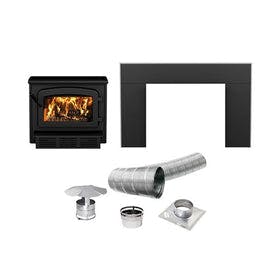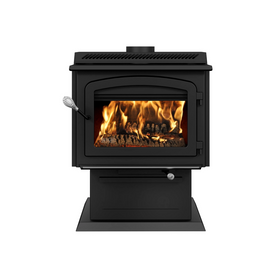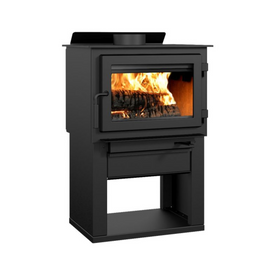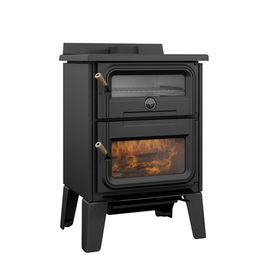
Are Self-Cleaning Oven Features Dangerous?
Last Updated: Mar 28, 2025Nothing quite beats the sweet smell of chocolate chip cookies or your favorite dinner wafting through the house. But what about when that delicious scent is accompanied by the stink of a dirty, greasy oven?
Whether you cook every meal at home or use your oven here and there for special treats and freezer pizzas, it’s essential to keep your oven clean. Just a small spill of cheese or splatter of grease can completely change the taste and smell of your food. If not cleaned up, spills, splashes, and grease from regular use will eventually burn, causing your oven to stink, smoke, or even catch fire.
Cleaning your oven doesn’t have to be a groan-worthy task, especially if you prepare the right cleaning solutions and give them time to lift that greasy gunk for you.
Table of Contents
- What Does the Self Clean Oven Feature Do?
- Is the Self Clean Oven Feature Safe?
- How Is the Self-Cleaning Oven Feature Dangerous?
- How Often Should I Clean My Oven?
- How Do you Clean Your Oven Naturally?
- How Do you Clean Your Oven Racks Naturally?
- How to Clean Your Oven Racks with Cleaner?
- How Do You Clean a Dirty Oven?
What Does the Self Clean Oven Feature Do?
Many ovens will “clean themselves” through a high heat process that melts away grease and burns caked-on food to ash. When the “self-clean” button is pressed, the oven will immediately lock itself and begin heating to extremely high temperatures of about 500 degrees or more. Depending on your oven, the process may take 2-3 hours. As you can imagine, that heat level for such a long time uses a great deal of energy. It will also raise the temperature of your house, forcing cooling systems to work overtime.
Is the Self Clean Oven Feature Safe?
You may have noticed some ovens have a nifty feature called “self-clean.” While it may seem ideal to push a button and come back to a sparkling clean oven, you probably already realize that such dreams aren’t exactly reality. And, as a sustainably-minded homeowner, you should know that using the feature probably comes with a reasonable expense to both your utility bill and your health. The self-cleaning oven feature is only recommended for ovens with very little mess. Because the oven literally burns messes, dirty ovens will likely put off a lot of smoke and smells, polluting your indoor air and doing quite a bit of damage to the oven itself.

How Is the Self-Cleaning Oven Feature Dangerous?
One of the biggest risks of self-cleaning is the danger of oven fires sparked from grease and food combined with high heating temperatures. Even if your oven is relatively clean and less likely to catch fire, such high heat can still do significant damage to the appliance itself.
The oven locks itself as a safety precaution when self-cleaning, but it’s very common for the high heat to break the lock, making it impossible to open when it cools. Extreme heat may melt the oven’s insulation, damage wiring, and harm the electrical board. Such damage can cause error codes and even trigger the oven to turn off and on all by itself. High heat can also break the oven thermostat and/or thermal fuses, causing inaccurate temperature readings that may result in undercooked or burnt food. All of these avoidable problems can be complex, requiring professional repairs and replacement parts.
If you still feel it’s worth trying the self-cleaning oven feature, be sure to:
- Open the windows, turn the exhaust fan on and check your smoke detectors.
- Never leave the oven unattended.
- Remove everything (racks included).
- Never use an oven cleaner with the self-cleaning feature.
- Once cooled, thoroughly clean the oven of ash and wipe the whole oven down with vinegar and water.
How Often Should I Clean My Oven?
The general rule for regular cooks is every three months. If you don’t cook often, you can probably get away with cleaning your oven just once or twice a year. Of course, if you notice caked-on food or the oven stinks or smokes when turned on, that’s a telltale sign it’s ready to be cleaned.
How Do you Clean Your Oven Naturally?
Cleaning your oven manually really isn’t all that hard and probably doesn’t require nearly the elbow grease you think it does. Taking the time to prep the range for cleaning makes the process relatively easy and will leave your house smelling great.
Method #1: Lemony Fresh
This oven cleaning method is natural, non-toxic, ridiculously easy, and will leave your whole house smelling fresh and clean. All you need is two lemons!
Start by slicing two lemons in half. Squeeze their juices into an oven-safe baking dish or mixing bowl. Add 1/3 cup water and drop the rest of the lemon, rind, and all into the dish. Place the dish on the middle oven rack and bake at 250 degrees for one hour. Turn the oven off and open the door after an hour has passed, and let the smell of citrus waft throughout the house. Be sure to keep kids and pets away as the oven cools.
Once the oven is cooled enough to touch but still warm, remove the dish and racks. Using an abrasive sponge or scouring pad, give the interior oven walls a good scrub to remove any gunk. The lemon will have loosened it up, making this job relatively straightforward. Grab a clean, damp cloth and give it all a good wipe down to remove any crumbs. Now all you have to do is clean those racks, and your oven is good as new!
Method #2: Baking Soda Paste
This oven cleaning method uses safe ingredients you probably already have in the kitchen and does most of the heavy lifting for you.
Start by making a spreadable baking soda paste by mixing ½ cup baking soda with 2-3 tablespoons of warm water. Using a cloth, coat the inside of your oven with a good layer of paste. You can also apply it directly to the stove by using a spray bottle to mist the interior with water and then sprinkle the baking soda on the wet area. After applying the paste, please give it a gentle mist with a spray bottle filled with distilled white vinegar every 30 minutes until bedtime and once more 30 minutes before you’re ready to wipe it down. Combining vinegar and baking soda will foam, lifting stuck-on grease and food, so you have less scrubbing to do. For the best clean, it’s recommended you leave the paste sitting in the oven for 10-12 hours or overnight.
When ready, give the interior of your oven a good scrub with an abrasive sponge or scouring pad. The paste should help it all pull away easily. Please give it a good wipe down with a clean, damp cloth, and your oven is ready for cooking again!
How to Clean Your Oven Racks
Oven racks should be cleaned independently of the oven since they’re much easier to clean outside of the oven confines.
How Do you Clean Your Oven Racks Naturally?
Just like cleaning the interior of your oven, cleaning those racks can be just as simple with natural ingredients.
Remove the oven racks and place them in a large sink—or, if they’re large, in your bathtub. Sprinkle the racks with baking soda and gently pour distilled white vinegar on top. The combination will foam to let you know it’s working. Once the foaming subsides, plug the sink/tub and run hot water to cover the oven racks completely. Let them sit overnight.
In the morning, don a pair of heavy-duty rubber gloves and drain the water. Give the racks a good scrub with an abrasive sponge or scouring pad, taking care to get the top, bottom, corners, and crevices where food may get stuck. If you come across any chunks that aren’t coming free easily, give them a spray of vinegar, let them sit for 30 minutes, and try again. Give the racks a quick rub down with warm, soapy water, rinse them clean, and let them dry completely before replacing them in the oven.
How to Clean Your Oven Racks with Cleaner?
If you do choose to use a store-bought cleaner, be sure to choose a non-toxic option.
Remove the racks from the oven and take them outside, far away from open windows, kids, and pets. Wearing heavy-duty rubber gloves and goggles, liberally spray the racks down with the cleanser. Gently place the racks in a large trash bag and tie it shut. Leave the bag outside for the time recommended on the cleanser bottle to allow it time to loosen up the grease and grime.
Once ready, again, don those gloves and goggles again and carefully remove the racks from the bag. Wipe them down with a damp cloth. If you find any gunk still caked on, scrub it with a scouring pad or abrasive sponge and wipe it down again. Clean the cleanser off with hot, soapy water and rinse clean. Allow the racks to dry completely before putting them back in the oven.
How Do You Clean a Dirty Oven?
Proper cleaning and care of your oven will go a long way in keeping your family healthy and your home smelling fresh. Here are a few more things to keep in mind when cleaning and maintaining your oven.
- Before cleaning, always remember to remove everything from the oven. That includes racks, pizza stones, pots, pans, and thermometers.
- Keep your floor clean by covering the area under your oven and around it with towels or newspaper before cleaning to catch any runoff or drips.
- Never apply cleaner directly on heating elements or in the area where gas is released into the oven.
- Wear rubber gloves and goggles, especially when using store-bought cleansers, to protect yourself.
- For stuck-on gunk, you may use a knife to scrape it very carefully.
- Only use oven-safe pots, pans, and dishes in the oven. If unsure, check the bottom for a label to ensure they are indeed oven-safe.
- Always keep the oven clear of potholders, oven mitts, towels, plastic bags, paper plates, takeout containers, and anything else that may melt or start a fire.
Taking care of your appliances is an important component of having a more sustainable home, as it will help them last longer—which helps decrease your repair bills and delays replacement costs of both time and money.
Laura Bourland
Laura grew up in the California suburbs, far removed from environmentalism, but nature always has a way. She uprooted her life in 2015, moving to the countryside of Washington to live a more sustainable and simple life on 12 acres. She and her fiancee are learning on the job as they attempt everything from gardening and natural pest control to eco-friendly building and home improvement.










